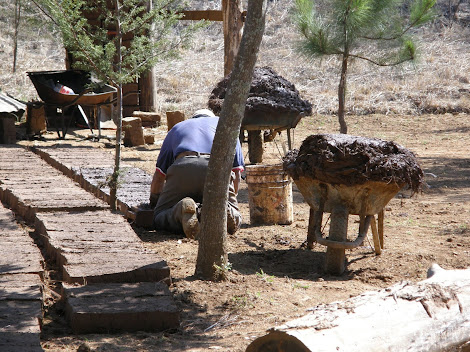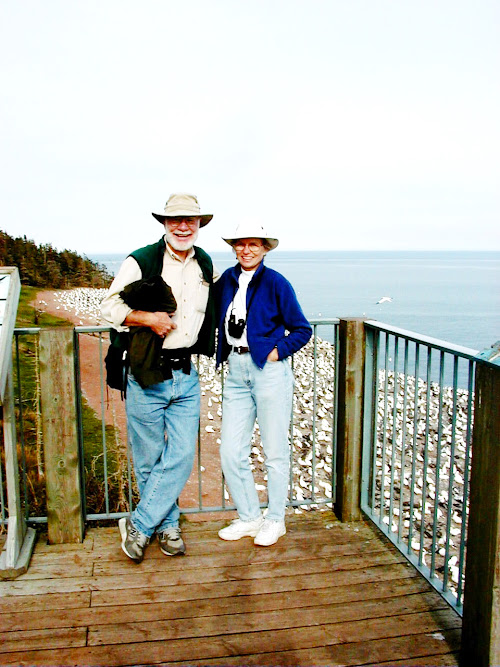Relaxing in Patzquaro
August 28, 2019
The horse was knee deep in mud and being riden round and round in circles. What in the world was going on?
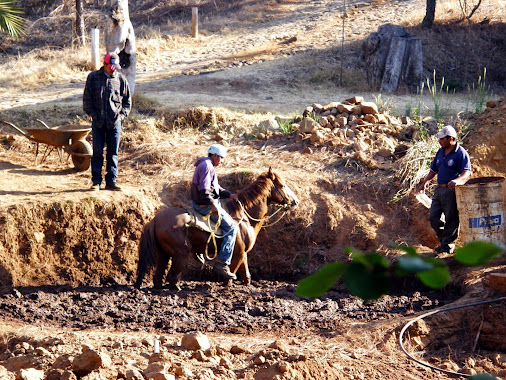 | ||
| Horse in Mud |
We were visiting with new-found friends who were neighbors in an RV Park in Patzquaro, Mexico and watching this strange behavior. The activity in this mud pit that was certainly not an accident of nature, it was obviously man-made. Although none of us had ever seen this operation before, it did not take long to figure it out.
The workers added hay to the right kind of soil or clay, then water and the horse functioned like an animal mix-master to mix all that stuff together.
 | |
| Adding Hay and Water |
Of course, they were making adobe bricks. After they got the right consistency and mixture, they shoveled the stuff onto a waiting wheel-barrow, and hauled it to the brick-making area.
 |
| Hauling the mud mixture |
Using rectanglar boards, the mud mixture was packed inside and the bricks were formed.
Then, the bricks were left in the high-dry climate and after a certain time, were dry and hard enough to be used in building construction.
It was a very labor-intensive operation but the materials seemed to be relatively cheap. With these bricks they could build a home like the one in the following photo.
This all happened on a trip that Pat and I made in 1988 down the east coast of Mexico, around the Yucatan Peninsula, to the southern tip of Belize, then over to and along the Pacific coast until we climbed back into the mountains and Patzquaro in the state of Michoacan.
So, there we were in the shade of our motorhome awning, chatting with this interesting British sheep farmer and his wife while enjoying a cool drink or two. Interestingly, Authur and Jean Topping continue their RV adventures -- mostly in southern Europe while Pat and I sold our last motorhome a few years ago. We still receive their fascinating travel reports.
Looking carefully at this photo, you will see binoculars and bird books on the table. Yes, we were also watching Mexican birds. A blue, leaking faucet provided water for the local birds and was located very close to us. Here are some of the birds we saw and photographed.
 | |
| Audubon's Warbler |
 |
| Black-headed Grosbeak |
 |
| Bushtit |
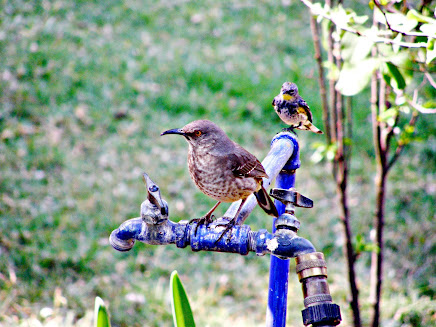 |
| Curve-billed Thrasher |
 | |
| Hepatic Tanager |
 |
| Summer Tanager female |
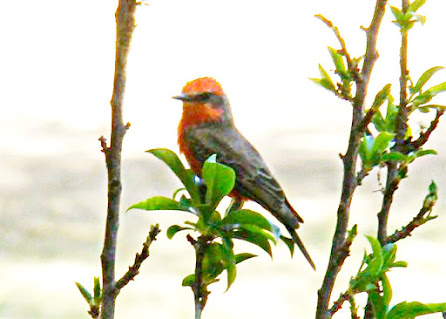 |
| Vermillion Flycatcer |
 |
| Silky Flycatcher |
OK, it's a pretty lazy way to go birdwatching, but it was very relaxing and fun. We also saw other interesting birds such as a Blue Mockingbird, but failed to obtain a good photo.
Patzquaro proved to be one of the most interesting stops on our trip.
Table of Contents: https://www.blogger.com/blog/post/edit/6813612681836200616/3382423676443906063?hl=en
